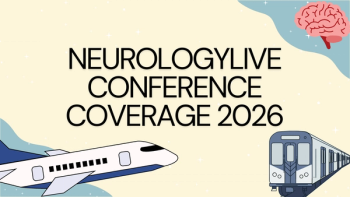Published in the Journal of Clinical Sleep Medicine, findings from a study of treatment-naïve adults with obstructive sleep apnea (OSA) suggest that using low health literacy-designed educational videos (EVs) can improve adherence to continuous positive airway pressure (CPAP) treatment.1
Led by Claire M. Ellender, BSc, MBBS, FRACP, respiratory and sleep physician, Princess Alexandra Hospital, Brisbane, Queensland, the addition of low-cost audio-visual EVs led to 3.66 (95% CI, 2.92-4.40) hrs/night of CPAP usage at month 12, which was significantly greater than the 2.50 (95% CI, 1.94-3.06) hrs/night for those on standard-of-care (SC) education.
A total of 195 patients were randomly assigned 1:1 to either usual SC (n = 99) or SC plus 5 EVs (n = 95) showing a patient’s journey, designed with low health literacy communication techniques to teach patients about OSA and CPAP therapy. The cohort had a mean age of 57 years (interquartile range [IQR], 44.1-64.8 years), with no statistically significant between-group differences in patient characteristics at baseline. Between the SC vs EV groups, there was a diagnostic apnea-hypopnea index of 34 events/hr (IQR, 21-59) vs 30 events/hr (IQR, 20-50), respectively, and Epworth Sleepiness Scale scores of 12.8 (±6) vs 11.7 (±5).
The primary end point, CPAP usage at 2 months, was not statistically significantly between those on SC (3.45 hrs/night; 95% CI, 2.76-4.13) vs EV (3.75 hrs/night; 95% CI, 3.14-4.37) nor in proportion with adequate usage or overall commencement rate. Despite this, investigators found a significant difference in hours of CPAP usage at the 12-month time point, suggesting that these effects may take longer than typically thought. Additionally, the probability of adequate CPAP usage at 12 months was higher in the intervention arms (odds ratio [OR], 1.33; 95% CI, 1.04-1.7; P = .013). Patients with low education backgrounds benefitted substantially from the EV intervention compared with SC (mean difference at 12 months, 2.47 hours/night usage; 95% CI, 1.01-2.93; P <.01).
Sunobinop Demonstrates Positive Findings in Reducing Wake Time After Falling Asleep
A recent phase 2 study showed a significant decline in wakefulness after sleep onset across both doses of sunobinop for individuals with insomnia recovery from alcohol use disorder.
Previously, studies have been inconsistent with the benefits of EVs to improve CPAP use. One 2017 study showed no differences in CPAP adherence at 30 days (EVs: 3.3 hours/day [95% CI, 2.8-3.8] vs Usual care: 3.5 hours/day [95% CI, 3.1-4.0]) or during the 30 days after sleep clinic visit. Sleep clinic show rate was 54% in the education group and 59% in the usual care group; however, those who did not show up to the sleep clinic demonstrated significantly worsened CPAP adherence.2
A 2014 trial evaluated a brief motivational enhancement educational program directed at enhancing the subjects’ knowledge, motivation, and self-efficacy to use CPAP through the use of a 25-minute video, a 20-minute patient-centered interview, and a 10-minute telephone follow-up. In a cohort of 100 individuals with OSA, those on intervention had better CPAP use and greater improvements in ESS by 2.2 units (P = .001). Specifically, patients on intervention had higher daily CPAP usage by 2 h/d (Cohen d = 1.33; P <.001) and a 4-fold increase in the number of patients using CPAP for at least 70% of the days for at least 4 hours/day (P <.001).3
REFERENCES
1. Ellender CM, Samaranayake C, Reid N, et al. Randomized controlled trial on the efficacy of audio-visual health educational materials on CPAP adherence: the AHEAD trial. J Clin Sleep Med. 2022;18(11):2617-2625. doi:10.5664/jcsm.10182
2. Guralnick AS, Balachandran JS, Szutenbach S, et al. Educational video to improve CPAP use in patients with obstructive sleep apnea at risk for poor adherence: a randomized controlled trial. Thorax. 2017;72(12):1132-1139. doi:10.1136/thoraxjnl-2017-210106
3. Lai AYK, Fong DYT, Lam JC, Weaver TE, Ip M. The efficacy of a brief motivational enhancement education program on CPAP adherence in OSA: a randomized controlled trial. Chest. 2014;146(3):600-610. doi:10.1378/chest.13-2228





























